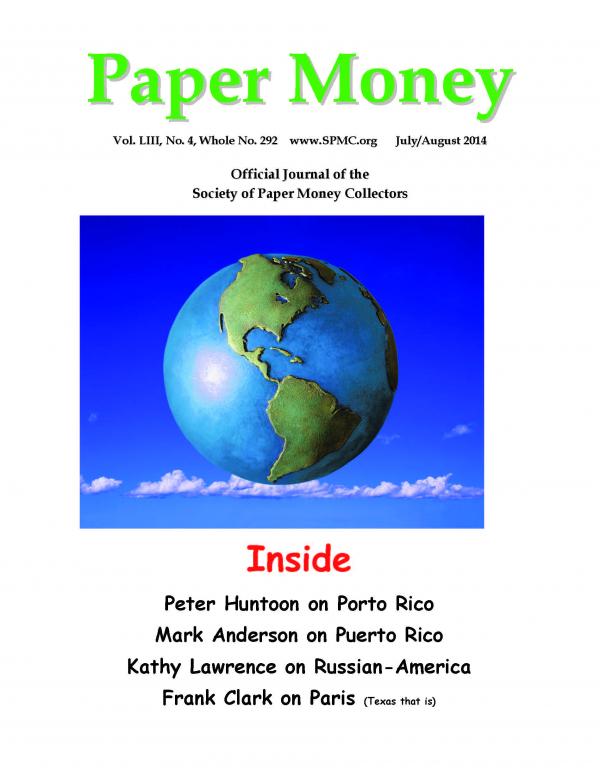Please sign up as a member or login to view and search this journal.

Table of Contents
The Paper Column—First National Bank of Porto Rico at San Juan
by Peter Huntoon............................................. 235
The Puerto Rican Junta Issues of 1813............................ 254
by Mark Anderson
Russian-American Company Scrip................................... 258
by Kathy Lawrence
Mexico Has Printed Its Own Notes Since 1969................ 261
by Carlson Chambliss
SPMC Celebrates its Inaugural Hall of Fame.................... 271
From One Big Collection to Another................................. 272
by Robert Gill
Fourth Issue 15ɇ Seal Plate Numbers.............................. 274
by Rick Melamed
Fighting Corruption with the Zero Rupee Notes................ 278
by Loren Gatch
An Introduction to CSA Paper Money............................... 281
by Pierre Fricke
About Texas Mostly—Paris, (TX) Bankers...................... 285
by Frank Clark
Small Notes—A Rare $5 Silver Certificate 629 Mule....... 287
by Jamie Yakes
Uncoupled—Souvenir Notes............................................ 289
by Joe Boling and Fred Schwan
New Obsolete Book Review............................................. 295
Chump Change—Loren Gatch........................................ 297
CSA Field Edition 2014 Book Review.............................. 298
President’s Column—Pierre Fricke.................................... 300
Membership Report—Frank Clark..................................... 301
Editor Sez—Benny Bolin................................................... 302
Memphis Happenings/Information.................................... 303
Money Mart........................................................................ 310


